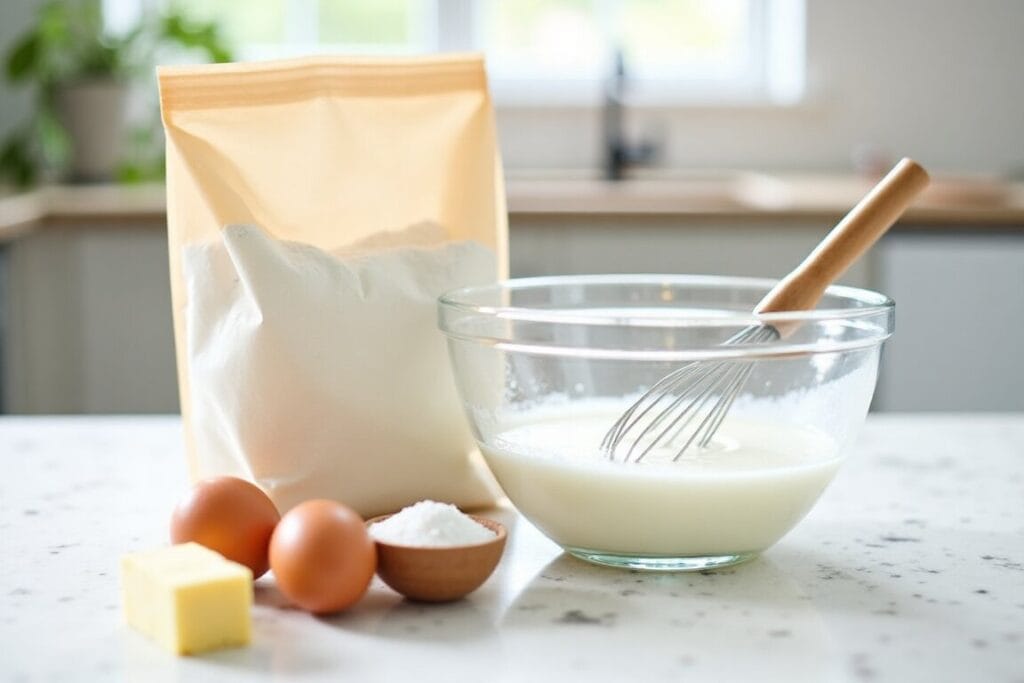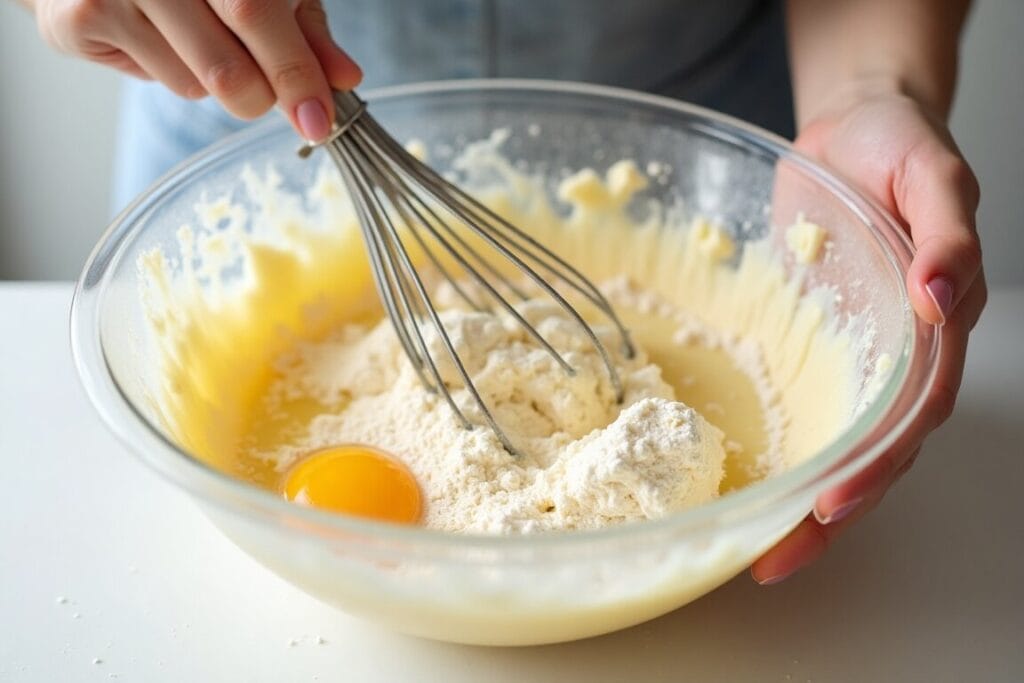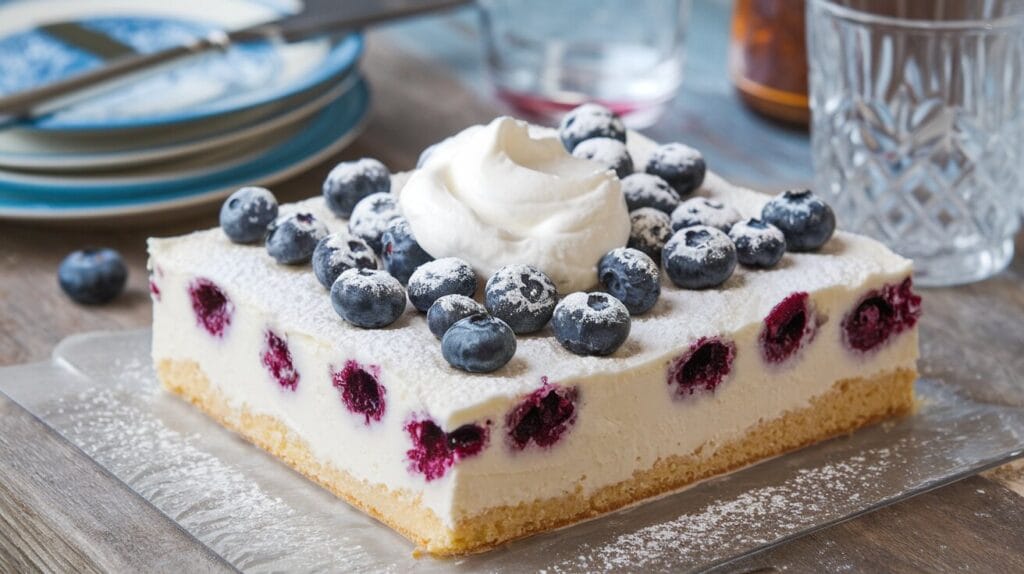Kefir sheet cake might sound like an unusual treat, but trust me, it’s a game-changer for anyone who loves moist, fluffy, and flavorful desserts. Whether you’re a seasoned baker or just someone looking to spice up their dessert repertoire, this guide will walk you through everything you need to know to nail the perfect kefir sheet cake.
Table of contents
- What Is Kefir? Understanding the Star Ingredient
- Why Choose Kefir for a Sheet Cake?
- Ingredients for Kefir Sheet Cake
- Step-by-Step Instructions to Bake a Kefir Sheet Cake
- Creative Variations of Kefir Sheet Cake
- Common Problems When Making Kefir Sheet Cakes
- Solutions and Pro Tips for Perfect Kefir Cakes
- Storing and Serving Kefir Sheet Cake
- Why Kefir Sheet Cakes Are a Trend in Modern Baking
- Frequently Asked Questions About Kefir Sheet Cakes
- Final Thoughts on Baking with Kefir
What Is Kefir? Understanding the Star Ingredient
Kefir is like yogurt’s cool cousin—fermented, tangy, and loaded with health benefits. It’s been used for centuries in various cultures and is made by fermenting milk with kefir grains. The result? A probiotic-rich drink that’s perfect for gut health and, surprisingly, for baking too!
Kefir’s Journey: From Ancient Cultures to Modern Kitchens
Kefir originated in the Caucasus Mountains centuries ago, where it was often referred to as “the drink of long life.” It was traditionally made by fermenting milk in goat-skin bags, passed down through generations as a health elixir. Over time, kefir’s fame spread to Europe and beyond, where it became a staple for health enthusiasts. Today, kefir’s versatility has made it a trendy ingredient in modern baking, combining tradition with innovation.
Types of Kefir: Milk vs. Water Kefir for Baking
When it comes to baking, milk kefir is the go-to. It’s creamy, rich, and perfect for cakes. Water kefir, while refreshing, lacks the body and acidity needed for the best results. Stick with milk kefir for this recipe—trust me, your taste buds will thank you!
Health Benefits of Kefir in Baking
Why use kefir in your cake? It’s not just a random ingredient. Here’s why:
- Probiotics for Gut Health: Even after baking, some probiotic benefits remain intact.
- Tender Texture: The acidity in kefir reacts with baking soda, making cakes softer and fluffier.
- Rich Flavor: It’s got a subtle tang that balances sweetness beautifully.
Nutrition Spotlight: What Makes Kefir a Superfood?
Kefir isn’t just delicious—it’s also a nutritional powerhouse:
- Calcium: Supports strong bones and teeth, making it a healthier choice for dessert lovers.
- Vitamin B12: Boosts energy and helps maintain healthy nerve and blood cells.
- Protein: Contributes to the structural integrity of the cake while keeping you full longer.
- Probiotics: Promote gut health and improve digestion, making your sweet treat easier to enjoy.
Adding kefir to your recipes turns a simple dessert into a nourishing delight that satisfies both your taste buds and your body’s needs.
“Adding kefir to your recipes isn’t just a baking hack—it’s a secret weapon for incredible flavor and texture.”
Types of Kefir: Milk vs. Water Kefir for Baking
When it comes to baking, milk kefir is the go-to. It’s creamy, rich, and perfect for cakes. Water kefir, while refreshing, lacks the body and acidity needed for the best results. Stick with milk kefir for this recipe—trust me, your taste buds will thank you!
Why Choose Kefir for a Sheet Cake?
Ever wondered why kefir works wonders in a sheet cake? Let’s break it down.
Unique Flavors Kefir Adds to Your Cake
Kefir has a tangy kick that’s like a gentle nudge to your taste buds. It’s subtle yet distinctive, giving your cake a sophisticated edge without overpowering the classic sweetness.
Kefir’s Role in Moist and Fluffy Cakes
Think of kefir as your cake’s hydration hero. Its moisture keeps the cake soft and spongy for days—goodbye dry cakes! Plus, its natural acidity helps activate baking soda, making your cake rise like a pro.
Ingredients for Kefir Sheet Cake

Ready to bake? Here’s your checklist of ingredients. Don’t worry, nothing fancy—just pantry staples with a kefir twist.
| Ingredient | Quantity |
|---|---|
| All-purpose flour | 2 cups |
| Granulated sugar | 1.5 cups |
| Baking soda | 1 teaspoon |
| Baking powder | 1 teaspoon |
| Salt | 1/2 teaspoon |
| Milk kefir | 1 cup |
| Unsalted butter | 1/2 cup (melted) |
| Eggs | 2 large |
| Vanilla extract | 1 teaspoon |
| Optional toppings | Fruits or nuts |
Substitutions for Common Allergens
Need to tweak the recipe? No problem:
- Gluten-Free: Swap out all-purpose flour for a 1:1 gluten-free baking mix.
- Dairy-Free: Use coconut kefir and replace butter with plant-based margarine.
- Egg-Free: Try flax eggs (1 tbsp flaxseed + 3 tbsp water per egg).
Step-by-Step Instructions to Bake a Kefir Sheet Cake
Let’s get to the fun part—baking! Follow these steps, and you’ll have a masterpiece in no time.
Preparation: Tools and Equipment Needed
Before you start, make sure you have:
- A 9×13-inch baking pan
- Mixing bowls (one large, one medium)
- Whisk and spatula
- Measuring cups and spoons
- Cooling rack
Mixing the Batter: Techniques for Success

- Preheat and Prep: Preheat your oven to 350°F (175°C) and grease your baking pan.
- Dry Ingredients First: In a large bowl, whisk together flour, sugar, baking soda, baking powder, and salt.
- Wet Ingredients: In another bowl, mix kefir, melted butter, eggs, and vanilla extract until smooth.
- Combine: Gradually add the wet mixture to the dry ingredients. Stir gently until just combined—don’t overmix!
- Pour and Spread: Pour the batter into your prepared pan and spread it evenly.
“Remember, overmixing is the enemy of a tender cake. Keep it gentle and watch the magic happen.”
Baking Tips for Evenly Cooked Cakes
- Bake for 25-30 minutes, or until a toothpick inserted in the center comes out clean.
- Rotate the pan halfway through baking for even heat distribution.
- Once done, let the cake cool in the pan for 10 minutes, then transfer to a cooling rack.
Creative Variations of Kefir Sheet Cake
Why settle for plain when you can jazz it up? Here are some creative spins on your kefir cake.
Adding Fruits: Blueberries, Apples, and More
Fold in a cup of fresh blueberries, diced apples, or even raspberries into the batter for a fruity twist. These add bursts of flavor and a touch of natural sweetness.

A fluffy kefir sheet cake is best served fresh. Sprinkle it with powdered sugar or top with fresh berries for a stunning presentation. You could also try a creamy glaze inspired by the delectable Mouthwatering Crab Brûlée Recipe That’s Surprisingly Easy to Make to add a unique twist.
Chocolate and Kefir: A Match Made in Heaven
Who doesn’t love chocolate? Add 1/2 cup of cocoa powder to the dry ingredients or sprinkle chocolate chips over the batter before baking.
Savory Kefir Sheet Cake Ideas
Feeling adventurous? Skip the sugar and try a savory version. Add herbs, cheese, and even shredded zucchini for a unique take on this classic.
Common Problems When Making Kefir Sheet Cakes
Even the best bakers hit bumps in the road. Here are the most common problems you might face and how to fix them.
Cake Too Dense? Troubleshooting Batter Issues
If your cake turns out too dense, it’s likely due to overmixing or incorrect measurements. Make sure to:
- Measure flour correctly (spoon it into your measuring cup, then level it off).
- Mix gently until just combined. The batter should be smooth but not overworked.
Cake Too Dry? Fixing Moisture Imbalances
A dry cake usually means too much flour or not enough liquid. To avoid this:
- Double-check your measurements.
- Don’t overbake; start checking doneness 5 minutes before the suggested time.
- Add a splash of extra kefir to the batter if it seems too thick.
Uneven Baking? Ensuring Consistency
Unevenly baked cakes can result from hot spots in your oven or uneven batter spreading. Here’s what to do:
- Rotate your pan halfway through baking.
- Use an oven thermometer to verify the correct temperature.
- Spread the batter evenly in the pan before baking.
“Baking is like a science experiment—a little precision goes a long way!”
Solutions and Pro Tips for Perfect Kefir Cakes
Ready to level up your baking game? Here are some insider tips:
How to Prevent Overmixing the Batter
Mixing the batter too much can make your cake tough. The trick? Fold the ingredients together with a spatula instead of beating them. When you see the last streak of flour disappear, you’re done!
Tips for Enhancing Flavor with Spices and Extracts
Want to make your cake unforgettable? Try these ideas:
- Add a teaspoon of cinnamon or nutmeg for warmth.
- Use almond or coconut extract for a unique twist.
- Sprinkle a bit of sea salt on top for a sweet-and-salty vibe.
Storing and Serving Kefir Sheet Cake
Once you’ve baked your delicious kefir sheet cake, you’ll want to keep it fresh and ready to serve. Here’s how to store it properly and make it shine on any occasion.
Best Practices for Storing Freshness
To keep your kefir sheet cake moist and flavorful, follow these tips:
- Short-Term Storage: Cover the cake tightly with plastic wrap or aluminum foil and store it at room temperature for up to three days.
- Refrigeration: If you live in a humid area, store the cake in the fridge to prevent it from spoiling. Place it in an airtight container to retain moisture.
- Freezing for Longer Shelf Life: Wrap individual slices or the whole cake in plastic wrap, then aluminum foil. Freeze for up to three months. When ready to eat, thaw at room temperature.
Creative Serving Ideas for Any Occasion
Your kefir sheet cake can be dressed up or down depending on the event. Try these serving ideas:
- Casual Gathering: Dust with powdered sugar and serve with a dollop of whipped cream.
- Birthday Party: Frost with cream cheese icing and decorate with fresh fruit or sprinkles.
- Tea Time: Pair with a hot cup of tea or coffee and enjoy a cozy treat.
“A beautifully presented cake can turn any gathering into a celebration. Let your creativity run wild!”
Why Kefir Sheet Cakes Are a Trend in Modern Baking
Kefir sheet cakes are not just a tasty dessert—they’re part of a larger movement in the baking world.
Popularity in Health-Conscious Baking Communities
With growing interest in gut health and natural ingredients, kefir has become a star in modern kitchens. Its probiotic benefits and tangy flavor make it a favorite for bakers looking to create healthier, yet indulgent, treats.
Social Media and the Rise of Kefir Desserts
Platforms like Instagram and Pinterest are filled with gorgeous photos of kefir-based desserts. The rustic simplicity of a sheet cake paired with the unique ingredient of kefir has made it a photogenic and popular choice for food bloggers.
Frequently Asked Questions About Kefir Sheet Cakes
Got questions? Here are some of the most common inquiries about baking with kefir.
Can You Use Homemade Kefir for Baking?
Absolutely! Homemade kefir works just as well as store-bought. Just make sure it’s properly fermented and not too runny.
How Long Does Kefir Cake Stay Fresh?
At room temperature, your kefir cake will stay fresh for 2-3 days. Refrigerated, it can last up to a week. For longer storage, freeze the cake as mentioned earlier.
Can Kefir Be Substituted in Other Cake Recipes?
Yes! Kefir can be a substitute for buttermilk or yogurt in most cake recipes. Its tangy flavor and moisture-enhancing properties make it a versatile ingredient.
Final Thoughts on Baking with Kefir
The Unique Joy of Baking with Kefir
Baking a kefir sheet cake isn’t just about creating a delicious dessert—it’s about experimenting with a unique ingredient that’s as healthy as it is flavorful. Kefir brings a delightful tang and unmatched moisture to cakes, making every bite memorable. This isn’t just a treat for your taste buds; it’s a wholesome experience for your body, thanks to the probiotics and nutrients kefir offers.
Baking as an Adventure
Whether you’re a first-time baker or a seasoned pro, baking with kefir opens up endless possibilities. From experimenting with flavors to sharing the results with friends and family, it’s more than a recipe—it’s a creative journey. Each attempt teaches you something new, whether it’s perfecting the batter consistency or discovering an exciting flavor combination.
Inspiring Creativity in the Kitchen
What makes kefir baking truly special is the freedom to innovate. Think of your kitchen as a playground, and kefir as your new favorite toy. Whether you’re adding fresh fruits, swirling in chocolate, or crafting savory variations, kefir invites you to think outside the box. It’s a reminder that baking is an art form, where each recipe is a canvas for your imagination.
The possibilities are endless, whether you’re crafting breakfast-inspired cakes with oats or holiday-themed versions with spices like nutmeg and cloves
Let this magical ingredient inspire not just desserts but a passion for creative baking.
“Kefir isn’t just an ingredient; it’s a way to elevate your baking game while adding a touch of health and sophistication.”

